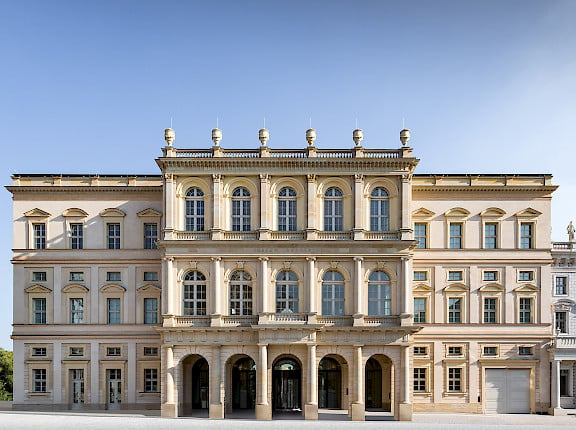Art World
Tech Billionaire Hasso Plattner’s Private Museum Readies for Opening
The museum was off to a bumpy start.

The museum was off to a bumpy start.

Hili Perlson

German software billionaire Hasso Plattner will inaugurate his new private museum in Potsdam in less than two weeks, on January 23.
Three years in the making, the Museum Barberini was initiated by Plattner, a co-founder of software giant SAP, who in the past 20 years has amassed a collection with a very specific focus: East German art and paintings created after the fall of the Berlin Wall in 1989. He also has art historical masterpieces in his holdings, with works by Impressionists Claude Monet and Pierre-Auguste Renoir, alongside works by Max Liebermann, Edvard Munch, Joan Mitchell, and Gerhard Richter.
The museum was off to a rocky start last year, when former director Peter Joch, who was hired to oversee the construction of the museum, resigned only a little over a year into his contract.
An additional, more serious impasse was narrowly avoided when Plattner, worth an estimated $9.2 billion, did not act on his threat to withdraw his private collection from the museum when the German government’s controversial cultural heritage protection legislation was implemented.
Now completed on schedule despite initial difficulties, the building is a reconstruction of a historic baroque palace built by Frederick the Great (1712-1786) in the heart of Potsdam, outside Berlin, and modeled on the Palazzo Barberini in Rome. The palace was destroyed in World War II, and the new private museum combines a recreation of the historic façade with a modern interior, offering approximately 4,000 square meters of exhibition space.
The museum’s director, Ortrud Westheider, said in a statement, “I look forward to filling this new place with life. We would like to enable visitors to experience an intense encounter with original artworks, and establish Potsdam as a new center for art history.”
In addition to the permanent collection and rotating shows—which will begin with the double bill “Impressionism: The Art of Landscape” and “Modern Art Classics: Liebermann, Munch, Nolde, Kandinsky”—the private institution will engage in academic exchanges and digital art education, a matter close to the German collector’s heart.
Plattner has recently joined forces with billionaire art dealer Guy Wildenstein to launch the Wildenstein Platter Institute (WPI), dedicated to “advancing art historical scholarship by fostering the accessibility, cataloguing, and digitization of primary sources.” The WPI’s first project is an ambitious catalogue raisonné for Jasper Johns.